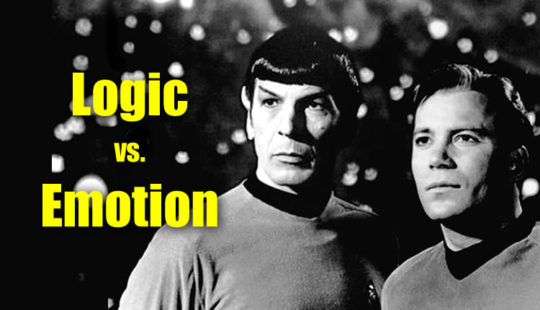Great Marketing Starts with Great Positioning
Let Spock position your product with logic before Kirk brands it with emotion
Who are you as a company? Why do you matter?

Two simple questions and quite possibly the two most important ones that business leaders face today. The answers, however, are anything but simple. To respond, you must fully understand what—at its core—your company does, what your value proposition is to your most important customers, how you are positioned vis-à-vis your competition, and how to tell your story in a compelling way.
If you find that determining who you are and why you matter is tough, rest assured that you’re not alone. Most executives have trouble answering these questions clearly, much less concisely. That is understandable. With so much going on in a company—so many hopes and dreams in development and just as many problems to be solved—it can be difficult to sort the wheat from the chaff. This is exactly why positioning matters: it helps you answer these key questions. Even more, it helps you get to aha!
Let’s start with some definitions. Al Reis and Jack Trout, who invented the concept of positioning in 1969 (and who toyed with the idea of calling their strategic concept “a rock”), defined it this way:
Positioning is not what you do to a product. Positioning is what you do to the mind of the prospect. That is, you position (place) the product in the mind of the prospect.
Decades later, this is still a pretty good definition. However, since that time much has been learned about the “marketing method” that results in the perception of a product, brand, or company. Above all, we’ve come to understand that in the Digital Age, perceptions must reflect substance, not desire or spin. Today’s market has too much access to facts and figures to afford companies the luxury of creating customer and prospect perceptions with advertising alone, as they so often did in the 1970s.
'Positioning is what you do to the mind of the prospect.' -Ries & Trout #Neuromarketing Share on X
Positioning vs. Branding
Perceptions today are grounded in and sustained by authenticity and thus must start with a new look at positioning. Does the perception of a product, brand, or company reflect its DNA? It is authentic? Get to Aha! introduces an approach to positioning that redefines the concept as a rational expression of the unique role and relevance of a company, product, or brand in the market: the definitive statement of who you are and why you matter. To ensure authenticity, this statement must be rooted in your corporate DNA. Positioning works in concert with its more emotive sibling, branding, which offers an emotional expression of a unique role and relevance through logos, look and feel, color palette, use of language, tone of voice, customer experience, and design.

To that end, there’s nothing like a good tagline to make a company feel like a billion bucks:
- “Just Do It.”
- “Tomorrow Starts Here.”
- “The Ultimate Driving Machine.”
Trafficking in a sexy currency of color, design, and voice, taglines touch the inner creative soul and make you feel good about yourself, your product, and your company.
Until you get that tagline home, unwrap it, and try it on. Then you sometimes find that it just doesn’t fit. Although it sounded good in the presentation and looked good on the storyboard, in the harsh light of day, it’s just isn’t quite right. Why?
Yin and yang.
 The power of this concept from ancient Chinese philosophy lies in the fact that the whole is greater than the sum of the two parts; it is, in fact, the dynamic duality between the two halves that creates the whole.
The power of this concept from ancient Chinese philosophy lies in the fact that the whole is greater than the sum of the two parts; it is, in fact, the dynamic duality between the two halves that creates the whole.
The problem with launching an advertising campaign or developing a website or jumping straight into taglines and other forms of emotional expression (branding) is that branding is only half the story of a company—the emotional half of the story, the emotional yang to positioning’s logical, practical yin. Fellow Star Trek fans can think Kirk versus Spock. But there can be no yang without yin, no Kirk without Spock, and the same holds true in marketing when it comes to positioning and branding.
So, how do you get the yin? You get it via rock solid positioning that is based on logic (Spock) rather than emotion (Kirk).

Position your product with logic before you brand it with emotion. #Neuromarketing Share on X
Your ideal position isn’t based on a perception you want to create, a brand you hope to build. Quite the opposite, in fact. Brand is derived from positioning; it is the emotional expression of positioning. Branding is the yang to positioning’s yin, and when both pieces come together, you have a sense of the company’s identity as a whole, an understanding of the essence of who and what that company is and what it stands for.
Learn more from Andy Cunningham on The Brainfluence Podcast
Position your product with logic. Brand is the emotional expression of positioning. #Neuromarketing Share on X

